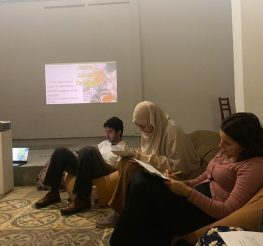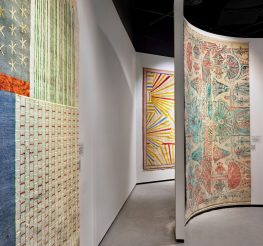
Cairo 360
Images via english.alarabiya.net
This past year has been quite a fruitful time for Egyptian archaeologists. With the discovery of mummies, ancient tombs, a mummification workshop, an ancient necropolis, and other valuable unearthed artefacts across the nation, our rich history is growing more and more every day. The most recent find is the tomb of a Fifth Dynasty official, which was discovered last month in an unnamed pyramid complex, according to Antiquities Minister, Khaled al-Enani.
Before we introduce the details of the discovery, let’s take a crash course in a small part of Egyptian history to further appreciate this incredible find. The Fifth Dynasty of Egypt lasted for approximately 150 years, from the early 25th century BC until the mid 24th century BC, although some believe that the reign of the pharaohs of that era lasted for 248 years.
So what do we know about the tomb? Firstly, it‘s located near Saqqara, a vast necropolis south of Cairo. Secondly, its north wall indicates that the design was inspired by the architectural blueprint of the dynasty’s royal pyramids. Regarding what was found inside, Mohamed Megahed, head of the excavations team stated, “It seems that the space of the burial chamber was almost completely filled with a limestone sarcophagus, which was found entirely destroyed by ancient tomb robbers.”
For a further depiction of the layout of the burial chamber, Megahed added, “The L-shaped Khuwy tomb starts with a small corridor heading downwards into an antechamber, and from there a larger chamber with painted reliefs depicting the tomb owner seated at an offerings table.” If you’re wondering who the owner of the tomb is, his name was Khuwy who is believed to have been a nobleman during the Fifth Dynasty and whose human remains showed clear traces of mummification.

With the help of an international of group Egyptologists, a red granite column was discovered dedicated to Queen Setibhor in the same pyramid complex. She is said to have been the wife of King Djedkare Isesis, the eighth and penultimate king of the dynasty. The interesting fact is that neither Setibhor nor the owner of this mysterious pyramid complex was known. Now, archaeologists have hit two birds with one stone as the answer was carved in the shaft of this column, revealing both the identity of the pyramid complex’s owner, and Setibhor’s true character. The inscription read as follows, “The one who sees Horus and Seth, the great one of the hetes sceptre, the great of praise, king’s wife, his beloved Setibhor.”
It is worth mentioning that the pyramid complex of Queen Setibhor represents one of the earliest pyramids in south Saqqara and it is the largest pyramid complex built for a queen during the Old Kingdom.
We hope that the intensified attempts to promote archaeological discoveries and to revive our tourism continue to prosper and grow.
recommended
 Arts & Culture
Arts & Culture
Culture Beyond Museums: 5 Spaces in Egypt Sparking Curiosity
Cinema du Mounira Cultural Spots +4 Shopping
Shopping
Black Friday 2025: Where to Find Discounts & Offers in Egypt
Affordable shopping black friday +3 Arts & Culture
Arts & Culture
Cairo Design Week 2025: A Celebration of Creativity Across the City
Art Galleries in Zamalek arts and crafts +3 Restaurants
Restaurants

